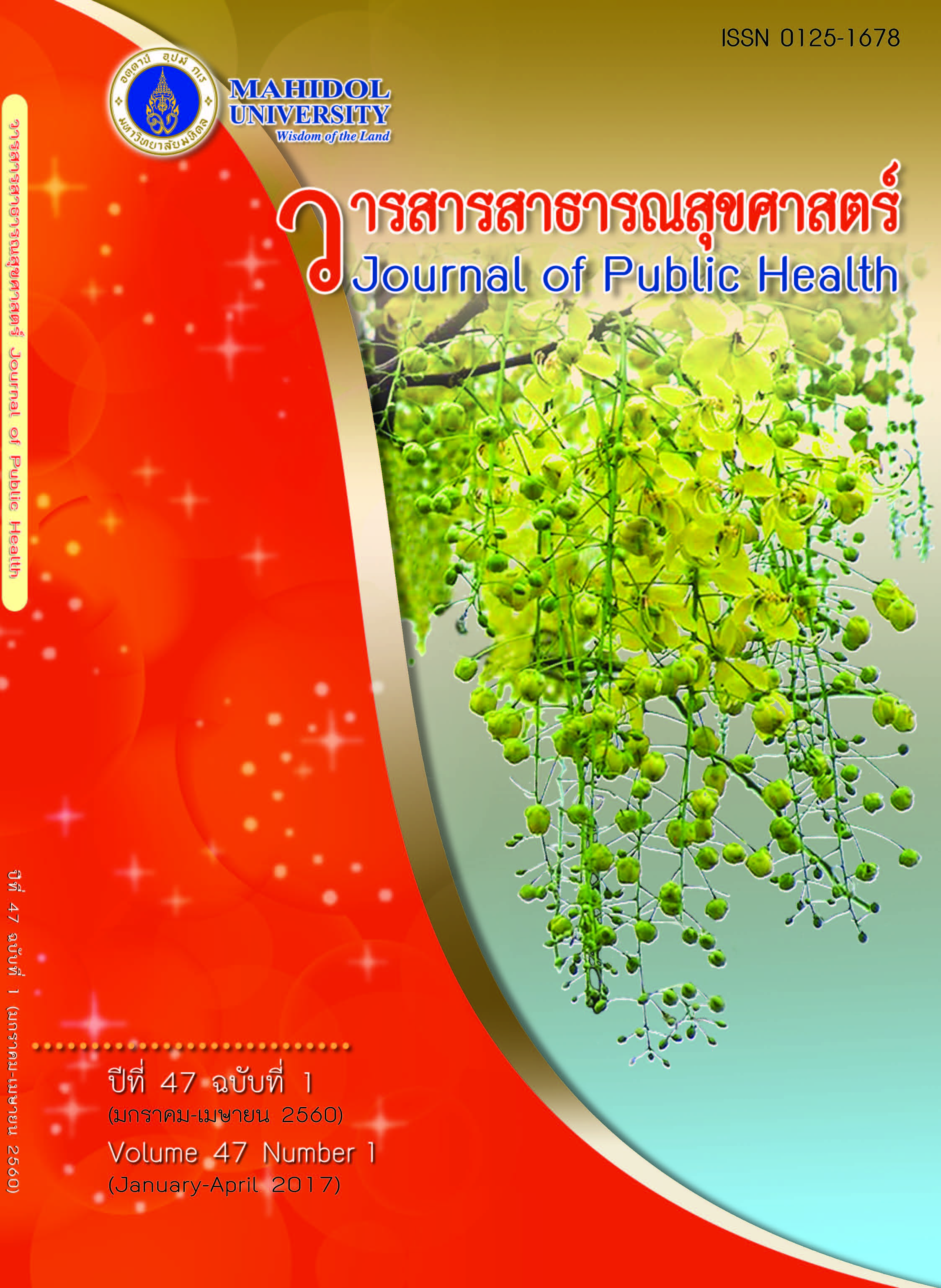Emergency Room Observation Unit Reduces Emergency Department Length of Stay among Non High Risk Heart Failure Patients
Keywords:
emergency department, length of stay, emergency room observation unit, heart failure, ระยะเวลาการให้บริการของห้องฉุกเฉิน, ระบบบริการห้องสังเกตอาการ, ห้องฉุกเฉิน, ผู้ป่วยภาวะหัวใจวายAbstract
This retrospective study aimed to evaluate outcome of the mean length of stay (LOS) in the emergency department (ED) and rate of ED discharge for nonhigh risk heart failure (HF) patient pre- and post implementation of the emergency room observation unit (EROU). The medical and related records of all the adult patients who visited the ED in one urban university-affiliated hospital from October 2010 through September 2014 were reviewed on a specially designed form comprising 1) patient sociodemographics 2) patients' conditions on ED visit and 3) EDLOS. A total of 950 eligible patients meeting the established criteria were included in the study. The pre-EROU group of 455 patients (attending the ED between October 2010 and September 2012) and the post group of 495 patients (attending the ED between October 2012 and September 2014). Chi square and Log rank test were used to analyze data. The implementation of the EROU significantly decreased overall mean EDLOS among nonhigh risk HF patients from 12 hours and 40 minutes to 10 hours and 53 minutes (p = 0.004).The percentage of nonhigh risk HF patients discharged home from the ED decreased significantly from 67.7% to 49.1% (p <0.001) whereas the percentage admitted to the medical inpatient unit remained unchanged. In conclusion, the implementing an EROU in ED can shorten the overall EDLOS and decrease rate of discharge home from ED among nonhigh risk HF patients.
การลดระยะเวลาการให้บริการของห้องฉุกเฉินในผู้ป่วยภาวะหัวใจวายประเภทที่ไม่มีความเสี่ยงสูง ด้วยห้องสังเกตอาการในห้องฉุกเฉิน
การศึกษาครั้งนี้เป็นการศึกษาแบบย้อนหลังเพื่อประเมินผลของค่าเฉลี่ยระยะเวลาการให้บริการ และอัตราการจำหน่ายผู้ป่วยภาวะหัวใจวายประเภทที่ไม่มีความเสี่ยงสูง ก่อนและขณะมีห้องสังเกตอาการในห้องฉุกเฉิน เก็บข้อมูลด้วยแบบบันทึกข้อมูลจากเวชระเบียนผู้ป่วยนอกในผู้ป่วยหัวใจวายทุกคนที่มาห้องฉุกเฉินของโรงพยาบาลมหาวิทยาลัยแห่งหนึ่ง ตั้งแต่เดือนตุลาคม พ.ศ.2553 ถึงกันยายน พ.ศ.2557 ได้แก่ 1) ข้อมูลส่วนบุคคล 2) คุณลักษณะของการมายังห้องฉุกเฉิน และ3) ระยะเวลาการให้บริการของห้องฉุกเฉิน กลุ่มตัวอย่างเป็นไปตามเกณฑ์คัดเข้าจำนวน 950 คน แบ่งเป็นกลุ่มก่อนมีห้องสังเกตอาการ(เดือนตุลาคม พ.ศ.2553 ถึงกันยายน พ.ศ.2555) จำนวน 455 คน และกลุ่มขณะมีห้องสังเกตอาการ(เดือนตุลาคม พ.ศ.2555 ถึงกันยายน พ.ศ.2557) จำนวน 495 คน วิเคราะห์ข้อมูลด้วยสถิติไคสแควร์ และ Log rank พบว่าเมื่อมีห้องสังเกตอาการผู้ป่วยหัวใจวายนี้มีค่าเฉลี่ยระยะเวลาการให้บริการของห้องฉุกเฉินลดลงอย่างมีนัยสำคัญจาก 12 ชั่วโมง 40 นาทีเป็น10 ชั่วโมง 53 นาที (p = 0.004) และอัตราการนอนรอกลับบ้านจากห้องฉุกเฉินลดลงอย่างมีนัยสำคัญจากร้อยละ 67.7 เป็นร้อยละ 49.1 (p < 0.001) แต่อัตราการรับไว้ในหอผู้ป่วยในอายุรกรรมไม่เปลี่ยนแปลง สรุปได้ว่าการมีห้องสังเกตอาการสามารถลดระยะเวลาการให้บริการและลดอัตราการนอนรอกลับบ้านในห้องฉุกเฉินของผู้ป่วยหัวใจวายได้
Downloads
Published
Issue
Section
License
Creative Commons License CC-BY-ND


